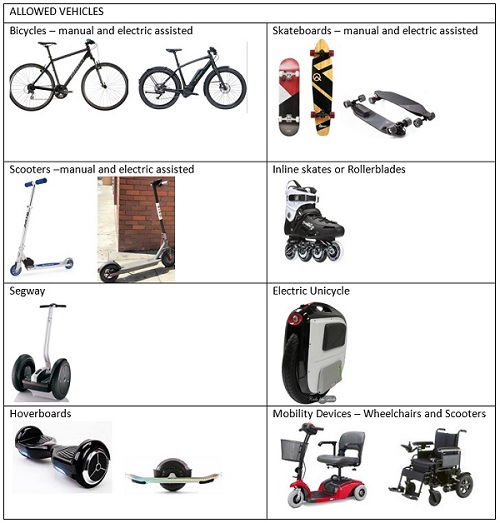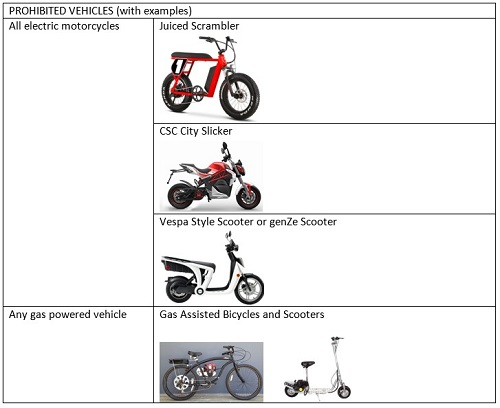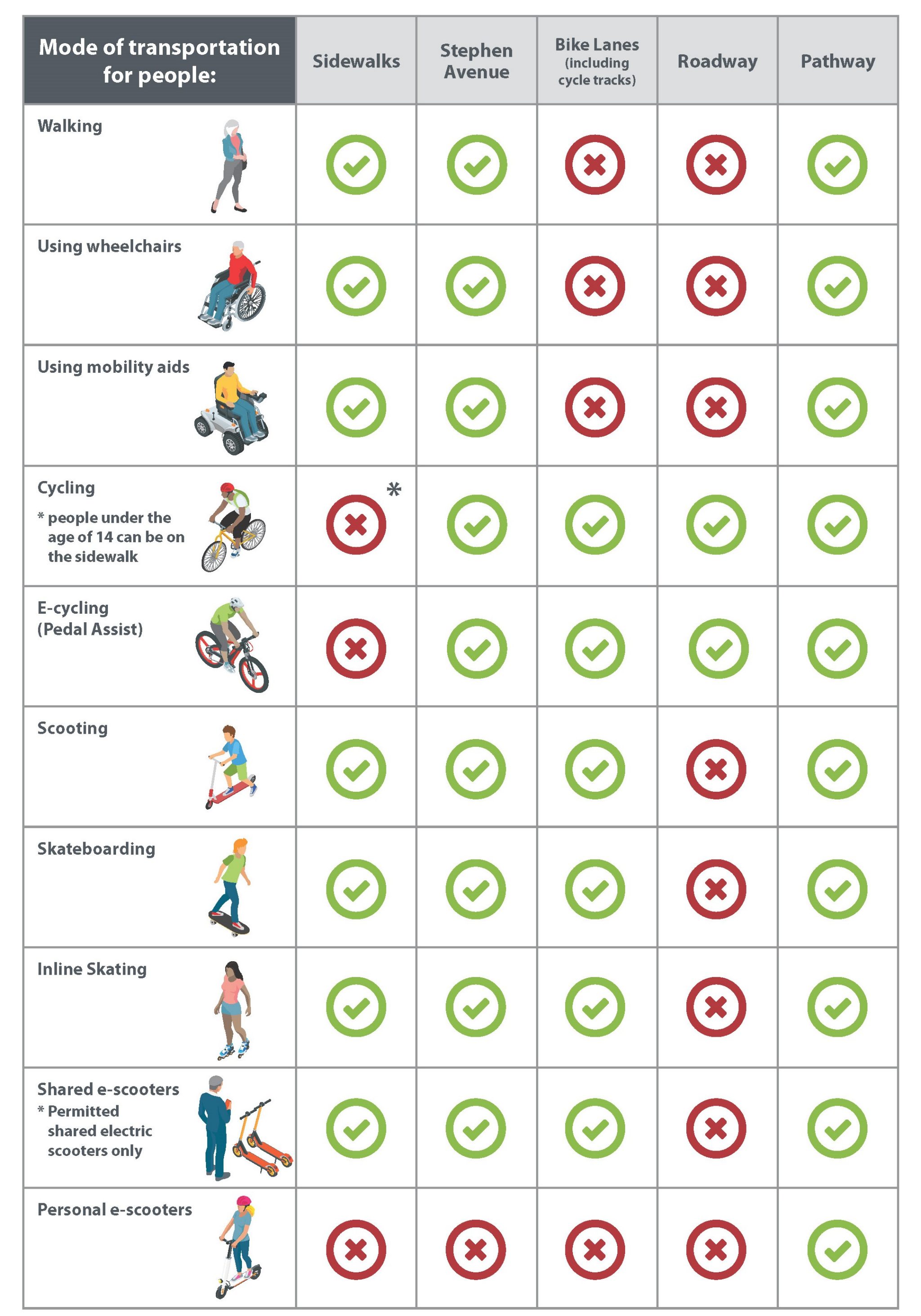Cycling bylaws and safety tips
Bicycles are classified as vehicles under the Alberta Traffic Safety Act. This means people cycling have many of the same rights and legal responsibilities as other roadway users and must understand:
There are also provincial laws designed for your safety, regardless of where you ride. People cycling must also follow the applicable City of Calgary bylaws.
Cycling laws
Whether riding on City pathways or roadways, people cycling must obey the following Provincial laws:
- Pedal bicycles: Bicycle helmets must be worn by all bicycle riders and passengers under the age of 18. For helmet specifications to meet Canadian safety standards, review the Alberta Traffic Safety Act, Part 6, Division 5, Sections 111 and 112.
- Electric or power-assist bicycles: Bicycle helmets must be worn by all riders and passengers, regardless of age.
- All bicycles:
- Must have at least one working brake.
- Must be equipped with a bell or horn.
- Must be equipped with the following when riding at dawn, dusk or in the dark:
- A white-light headlight (no more than two)
- A red-light tail light
- A red rear reflector
- All bicycle riders: Must use the appropriate hand signals and shoulder check before turning or changing lanes.
Cycling regulations
- Traffic Safety Act, R.S.A. 2000, c. T-6(TSA)
- Vehicle Equipment Regulation, Alta. Reg. 122/2009 (VER)
- Use of Highway and Rules of the Road Regulation, Alta. Reg. 304/2002 (RR)
- City of Calgary Traffic Bylaw, 26M96 (TBl) and
- City of Calgary Parks and Pathways Bylaw, 11M2019 (PPBl)
Pathway bylaws and safety tips
People cycling on pathways must obey the following City of Calgary Bylaws:
- Keep speed to a maximum 20km/hr unless otherwise posted.
- Keep to pathways and well-established trails to protect habitat.
- Cycling with a leashed dog is not permitted on pathways.
- Be equipped with a forward facing white light and rear red reflector when riding between sunset and sunrise.
- Use of an audible signal (such as a bell) when overtaking another pathway user.
We also encourage following these safety tips when riding on city pathways:
- Where twinned sections of pathway exist, use the designated cycle path.
- In winter, where pathways are twinned and only one path is plowed, share the cleared pathway with other users.
- Move off the path to the right when stopping.
- Ride single file.
- Avoid using your cell phone or other hand-held technology while you're in motion.
- Keep the volume low on headsets so you can hear others around you.
- Watch for slippery sections covered by ice, loose gravel or silt.
- Keep your eyes looking ahead to see upcoming obstructions.
- Keep to the right side of the pathway except when passing.
- Yield the right-of-way to users on the right where two pathways intersect.
- Ring your bell/horn or use your voice to alert others when passing or approaching a blind spot such as a corner or hill.
The following recreational vehicles, with and without a motor, are permitted on Calgary Pathways as per the Parks and Pathway Bylaw. Users should be aware that many of these types of vehicles are restricted to the pathway, and are not permitted on the sidewalk as per the Alberta Traffic Safety Act.


Despite the type of vehicle being used, ALL users must obey a maximum speed of 20km/hr, or posted speed limit.
New ways to get around Calgary
Changes to the transportation bylaw, approved by Council in March 2019 also provide more definition on where different mobility modes may operate. For modes not listed in the chart below (Segway, hoverboards etc.) these are restricted to pathway use only.

Roadway bylaws and safety tips
Cyclists on roadways must obey the following City of Calgary bylaws:
- People cycling must obey all traffic signs and signals.
- People cycling are permitted to ride on all Calgary roadways except Deerfoot Trail, and to take the whole lane if required for safety but should ride as close to the curb as is safe to do so.
We also encourage following these safety tips when riding on roadways:
- Be predictable.
- Watch for cars entering and exiting driveways and alleys.
- Watch for doors of parked cars opening.
- Ride as far to the right of the road as practicable, unless you're making a left turn or it's safer to take the whole lane.
- Avoid using your cell phone or other hand-held technology while you're in motion.
- Keep the volume low on headsets so you can hear others around you.
- Keep your eyes ahead to see upcoming obstructions.
- Watch for slippery sections covered by ice, loose gravel or silt.
- Plan your bicycle route ahead of time to avoid unnecessary distractions and sudden changes in direction. Your winter cycling route may be different from your spring or summer route.

